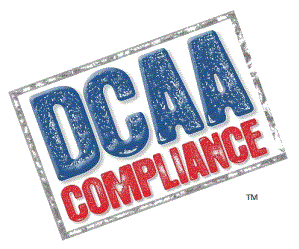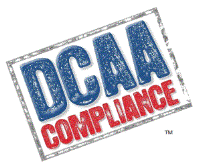Back to the recent Armed Services Board of Contract Appeals (ASBCA) Technology Systems, Inc. (TSI) (ASBCA 59577) and the nine areas I believe are worth discussing:
- Supporting Material Overhead rate
- DCAA auditor independence
- DCAA’s right to change their mind in subsequent audits
- Tax vs. Book on depreciation issues
- Bonuses
- Accrued Costs crossing fiscal year
- Unapproved subcontractors
- An excellent example of DCAA properly developing findings.
- Documenting consultants work product
The scratched out areas were discussed in previous articles. Today, I am going to talk about developing findings and documenting consultants’ work products. Again, I am not a lawyer and this is not legal advice.
Developing Findings
The fact that I consider this topic worthy of discussion illustrates the reality that the failure of auditors to properly develop findings is an ongoing issue in too many DCAA audits. Way too often, the first time a contractor hears about a proposed finding is when it is proposed.
During a recent DCAA audit, the auditor thought she could benefit from the research she did on me and my views by announcing her agreement with what she thought was one of my strong assertions:
“Well, we all know that the Contract Audit Manual. is not regulatory and only guidance”.
My response had a visible impact on her: “The CAM is guidance for contractors, but it is your standing orders. I would expect a DCAA auditor to follow those orders.”
Let us see what those standing orders in the CAM say about developing findings:
4-303.1(b) The auditor should discuss preliminary audit findings (e.g., potential system deficiencies, potential FAR/CAS noncompliances, etc.) with the contractor to ensure conclusions are based on a complete understanding of all pertinent facts. These types of discussions do not impair auditor independence and are generally necessary to obtain sufficient evidence to support audit conclusions.
6-708(b). During the course of the audit, significant audit findings should be brought to the attention of, and discussed with, the contractor, and when appropriate with the cognizant principal ACO and CAC, as soon as possible to expedite the resolution process (See 6-902e). The discussions are to ensure that the auditor’s conclusions are based on a proper understanding of the facts and to ascertain whether the contractor/ACO/CAC has any additional information which would support or modify the audit findings. This will enable resolution of the findings to take place prior to the completion of the audit. If agreement on an issue cannot be reached, the contractor should be requested to prepare a rebuttal for inclusion in the audit report. The process outlined above will result in an efficient audit that will conserve both audit and contractor personnel resources.
6-709(b). During the course of the audit, significant audit findings should be brought to the attention of, and discussed with, the contractor, and, where appropriate, with the principal cognizant ACO and CAC, as soon as possible so as to expedite the resolution process (see 6-902e). The discussions are to ensure that the auditor’s conclusions are based on a proper understanding of the facts and to ascertain whether the contractor/ACO/CAC have any additional information which would support or modify the audit findings
I simply cannot stress how many times simple misunderstandings were cleared up because the DCAA field operator brought it to our attention before taking it to their supervisor, and after that writing it up as a proposed finding. Heading off trouble at the earliest stages is an essential aspect of successful DCAA relationships.
One famous example was a DCAA auditor putting together this extensive spreadsheet that “proved” the contractor was calculating social security taxes incorrectly and that highly compensated employees were not paying their fair share of social security tax. He was still pretty embarrassed, but at least he had not written it up and sent it to his supervisor.
No one likes egg on their face and contractors should avoid watching DCAA auditors make fools of themselves. Sometimes this results a stubborn refusal on the part of some DCAA auditors to admit an error, such as my aggregating “Backspace Key Crisis”:
In the TSI case, it appears time and time again that both DCAA (at least the second auditor) and DCMA bent over backwards in the attempt to allow the contractor to dispute the findings. Despite this, it appears DCAA and DCMA stuck to their guns only to find the appeals board disagreeing with the auditors on over half of their findings.
Documenting Consultants Work Product.
It is a pure joy to hear the appeals board admonish DCAA with the exact arguments I made time and time again. I will let the judges speak for themselves:
The government labors under the false impression that the FAR requires a consultant to create “work product” merely for the purposes of proving its costs (see R4, tab 16 at 258, 260; gov’t br. at 54-55, 64-66). Though the FAR language in question is not as clear as we might like, it can be read- as we read it here – to impose no such requirement, Moreover, we have factually found the invoices submitted by TSI to be adequate to support a finding that TSI incurred the charged costs for SMI’s marketing activities.
We begin by examining that language of the FAR that the government holds out as requiring the generation and provision of “work product” to entitle recovery of costs for professional and consultant services. FAR 31.205-33, Professional and consultant service costs, provides in relevant part that:
(f) Fees for services rendered are allowable only when supported by evidence of the nature and scope of the service provided. work performed is proper and does not violate law or regulation shall include
(1) Details of all agreements (e.g., work requirements, rate of compensation, and nature and amount of other expenses, if any) with the individuals or organizations providing the services and details of actual services performed;
(2) Invoices or billings submitted by consultants, including sufficient detail as to the time expended and nature of the actual services provided; and
(3) Consultants’ work products and related documents, such as trip reports indicating persons visited and subjects discussed, minutes of meetings, and collateral memoranda and reports.
The government makes a superficially persuasive argument, that the FAR’s statement that the evidence necessary to determine that the work is proper “shall include … work products” and related documents, makes the provision of such documents mandatory (gov’t hr. at 54). The problem with this interpretation of the FAR is that it does not account for the case in which such documents were never created by the consultant. Moreover, it does not account for the case where, as here, the invoices include the data that the FAR defines as work product, such as persons visited and subjects discussed. We further note, that DCAA’s own audit manual, reflecting the government’s own interpretation of this FAR requirement, provides that, “[t]he auditor should not insist on a work product if other evidence provided is sufficient to determine the nature and scope of the actual work performed.” DCAA Manual, at 58-2 – 58-3. Moreover, amongst the “Frequently Asked Questions” in the relevant portions of the audit manual are responses indicating that other additional evidence may be considered to determine whether the services were, indeed, provided and allowable. Id. at 58-7.
Thus, we conclude that FAR 31.205-33(f) may require the provision of a consultant’s work product, if it exists, but is not so rigid as to require its creation when it would not otherwise be necessary for the consultant to perform its duties. To be sure, any lack of work product makes it more difficult for a contractor to prove that it incurred the costs for which it seeks compensation, and the lack of work product in an instance where the consulting work was of such a scale or scope that work product would be expected may properly subject the costs to question. As with most things, the proper amount of documentation and work product to be expected will largely depend on the scope of work performed, and we do not conclude that the FAR 25 intended to impose “make work” upon consultants that would only lead to higher costs to the contractor which would then be imposed upon the taxpayer.
Turning to the facts before us, we have found that the consulting agreements and the invoices provided, combined with the testimony given at the hearing, persuade us that the costs included in TSI’s FY 2007 ICP for SMI’s marketing services were, in fact, for that purpose and are allowable. This portion of the appeal is sustained.

